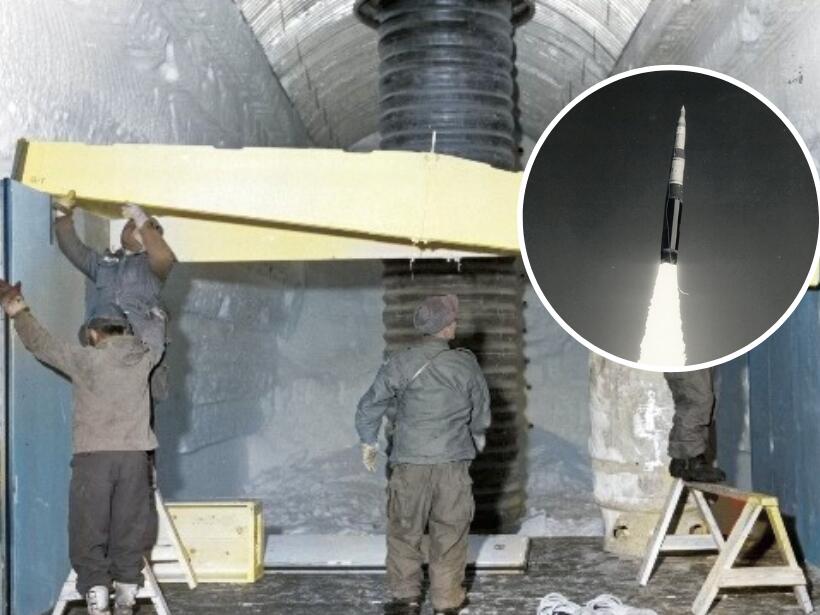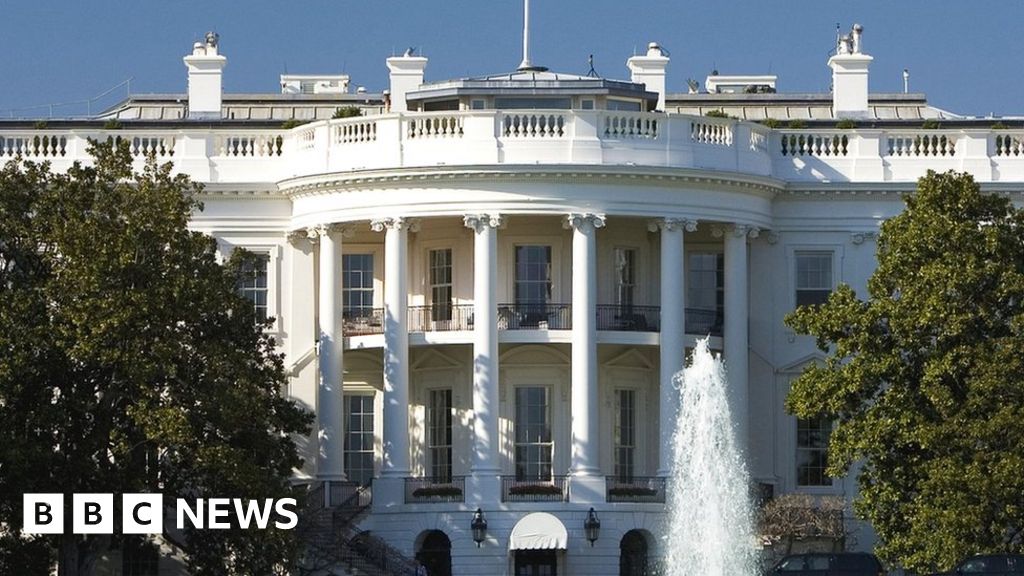Revealed: The Long-Hidden U.S. Nuclear Presence Under Greenland's Ice

Table of Contents
The Cold War Context: Why Greenland?
Greenland's strategic geographic location played a pivotal role in the Cold War, making it a key area of interest for both the United States and the Soviet Union. Its proximity to the Soviet Union made it an ideal position for early warning systems, capable of detecting potential missile launches. This crucial strategic advantage led to the establishment of significant U.S. military infrastructure on the island.
- Greenland's strategic position for detecting Soviet missile launches: The island's northern location offered a crucial vantage point for monitoring Soviet military activity.
- The establishment of air bases and radar installations: The U.S. invested heavily in building and maintaining air bases and sophisticated radar systems across Greenland, bolstering its surveillance capabilities.
- The secrecy surrounding military operations in Greenland: Much of the U.S. military activity in Greenland was shrouded in secrecy, reflecting the sensitive nature of Cold War operations and the strategic importance of the island.
These factors combined to make Greenland a crucial component of the U.S.'s Arctic strategy during the Cold War, highlighting the importance of its geographical position in the global geopolitical landscape. The desire for early warning systems against Soviet aggression drove much of the expansion of the U.S. military presence in Greenland.
Project Iceworm: The Secret Nuclear Base
At the heart of this hidden U.S. nuclear presence in Greenland lies Project Iceworm, a highly ambitious and ultimately unsuccessful endeavor to establish mobile missile bases beneath the Greenland ice sheet. The project, conceived in the late 1950s, aimed to create a network of underground tunnels and launch facilities capable of housing nuclear missiles.
- The scale and ambition of Project Iceworm: Project Iceworm represented a massive undertaking, requiring the construction of extensive tunnel networks within the ice sheet, a technologically unprecedented challenge.
- Technological challenges encountered in building and maintaining the base: The harsh Arctic environment presented significant obstacles. The movement of the ice sheet, the extreme cold, and the sheer scale of the project proved to be major hurdles.
- The environmental impact of the project: The construction and operation of the base inevitably had an environmental impact, though the full extent is still being investigated.
- The eventual abandonment of Project Iceworm: Due to the insurmountable technological challenges and escalating costs, Project Iceworm was ultimately abandoned in 1966.
The failure of Project Iceworm, however, doesn't diminish the significance of its ambition or the scale of the U.S. commitment to establishing a significant military presence, even a nuclear one, in this remote and inhospitable region.
Declassified Documents and Recent Discoveries
The veil of secrecy surrounding the U.S. nuclear presence in Greenland is gradually lifting, thanks to the release of declassified documents and ongoing scientific research. Recent findings have brought into sharper focus the reality of Project Iceworm and its enduring legacy.
- Newly released government documents revealing details of the project: Declassified documents have provided crucial insights into the planning, execution, and eventual abandonment of Project Iceworm.
- Scientific expeditions uncovering remnants of the base: Scientific expeditions have unearthed physical remnants of the base, providing tangible evidence of its existence and scale.
- Analysis of environmental samples showing traces of nuclear activity: Environmental samples have revealed traces of nuclear activity, raising concerns about potential long-term environmental consequences.
These discoveries continue to shed light on this forgotten chapter of the Cold War, offering valuable insights into the extent of U.S. military operations in the Arctic and the long-term environmental implications of these activities. This ongoing research highlights the importance of continued investigation into the U.S. nuclear presence in Greenland.
The Environmental Legacy: Nuclear Waste and Contamination Concerns
The potential environmental consequences of Project Iceworm remain a significant concern. The possibility of lingering radioactive contamination and the challenges of environmental remediation in the harsh Arctic environment necessitate careful monitoring and potential cleanup efforts.
- Concerns about the long-term effects of nuclear waste: The potential for long-term radioactive contamination poses a significant threat to the fragile Arctic ecosystem.
- The challenges of environmental remediation in the harsh Arctic environment: Cleaning up any potential contamination presents immense logistical and technical challenges, exacerbated by the remote location and extreme climate.
- Ongoing research and monitoring efforts: Scientific research continues to assess the extent of any environmental damage and monitor potential risks.
- International cooperation needed for environmental cleanup: Addressing the potential environmental challenges of Project Iceworm requires international cooperation and collaboration.
The legacy of Project Iceworm underscores the importance of considering the long-term environmental impact of military activities, particularly in sensitive ecosystems like the Arctic. The question of responsibility for any necessary environmental cleanup remains a significant challenge.
Conclusion
The revelation of the long-hidden U.S. nuclear presence under Greenland's ice underscores the secrecy and scale of Cold War military operations. The legacy of Project Iceworm raises critical questions about environmental responsibility and the lasting impact of such endeavors. Declassified documents and ongoing research continually unveil more about this clandestine chapter of history. Understanding the full scope of this clandestine operation is crucial, not only for historical accuracy but also for responsible environmental management in the Arctic region.
Learn more about the hidden history of the U.S. military presence in Greenland and the ongoing research into the U.S. nuclear presence in Greenland. Stay informed about the environmental challenges and the ongoing efforts to understand the full extent of this Cold War secret.

Featured Posts
-
 Albanese And Dutton Face Off Analyzing Their Key Policy Proposals
May 15, 2025
Albanese And Dutton Face Off Analyzing Their Key Policy Proposals
May 15, 2025 -
 New Free Game On Steam Is It Worth Playing A Review
May 15, 2025
New Free Game On Steam Is It Worth Playing A Review
May 15, 2025 -
 Paddy Pimbletts Ufc 314 Fight Will He Become Champion A Goats Prediction
May 15, 2025
Paddy Pimbletts Ufc 314 Fight Will He Become Champion A Goats Prediction
May 15, 2025 -
 White House Cocaine Investigation Concludes Secret Service Report
May 15, 2025
White House Cocaine Investigation Concludes Secret Service Report
May 15, 2025 -
 Jalen Brunson Exit Vs Luka Doncic Trade A Comparative Analysis Of The Dallas Mavericks Losses
May 15, 2025
Jalen Brunson Exit Vs Luka Doncic Trade A Comparative Analysis Of The Dallas Mavericks Losses
May 15, 2025
